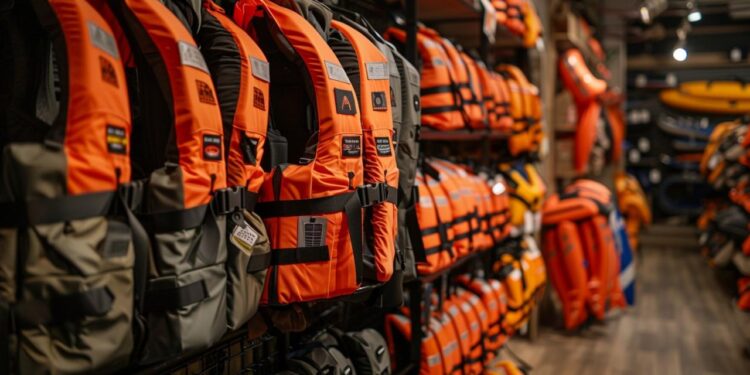Personal Safety Devices 2024 brings a glimpse into the future of safety technology, highlighting the evolution of devices designed to protect individuals in various scenarios. From innovative features to cutting-edge advancements, this overview explores the landscape of personal safety in the upcoming years.
Personal safety devices are portable tools or gadgets designed to enhance an individual’s safety and security in various situations. These devices are typically small, discreet, and easy to carry, providing a sense of protection and peace of mind to the user.
Types of Personal Safety Devices
- Personal Alarms: These devices emit a loud sound when activated, drawing attention to the user in case of an emergency.
- Pepper Spray: A non-lethal self-defense tool that can temporarily incapacitate an attacker by causing irritation and pain.
- Stun Guns: Handheld devices that deliver an electric shock to an assailant, disrupting their muscle functions temporarily.
- GPS Trackers: Devices that allow individuals to share their location in real-time with friends or family for added safety.
Importance of Personal Safety Devices
Personal safety devices play a crucial role in enhancing personal security in various situations such as walking alone at night, traveling to unfamiliar places, or encountering potential threats. These devices provide a sense of empowerment and readiness to handle unforeseen circumstances effectively.
Trends in Personal Safety Devices
Personal safety devices have come a long way from traditional methods to modern, technologically advanced solutions. Let’s explore the current trends in personal safety devices and how technology is shaping their evolution.
Comparison of Traditional vs. Modern Safety Devices
In the past, personal safety devices mainly consisted of whistles, pepper sprays, and self-defense keychains. While these tools are still effective, modern safety devices offer additional features and connectivity. For example, traditional pepper sprays have been upgraded to include built-in alarms, GPS tracking, and even Bluetooth connectivity to alert authorities or loved ones in case of an emergency. Modern safety devices also often come in discreet and stylish designs, making them more convenient and accessible for everyday carry.
Role of Technology in Personal Safety Devices
Technology plays a vital role in the evolution of personal safety devices. Wearable devices such as smart jewelry, smart watches, and safety apps leverage features like GPS tracking, real-time location sharing, and instant alerts to enhance personal safety. Some devices even incorporate artificial intelligence and machine learning algorithms to analyze data and provide proactive safety recommendations. Furthermore, the integration of voice commands and voice recognition technology enables hands-free operation of safety devices, making them more user-friendly and efficient.
Future Trends in Personal Safety Devices
Looking ahead, the future of personal safety devices is likely to focus on seamless integration with smart home systems, IoT devices, and cloud-based platforms. This interconnected approach will enable automated emergency responses, predictive analytics for risk assessment, and personalized safety solutions based on individual preferences and behaviors. Additionally, advancements in biometric authentication and facial recognition technology may further enhance the security and reliability of personal safety devices.
Popular Personal
In 2024, personal safety devices have become more advanced and diverse, catering to various needs and preferences. Let’s explore some of the top personal safety devices that are in demand this year, along with their key features and benefits.
1. Smart Personal Alarms
Smart personal alarms are compact devices that can emit a loud alarm when activated, alerting those nearby of a potentially dangerous situation. These alarms often come with features such as GPS tracking, emergency contacts notification, and in some cases, integration with smartphone apps for added functionality. In real-life scenarios, smart personal alarms can be helpful in deterring attackers, drawing attention in emergencies, and providing peace of mind when walking alone at night.
2. Wearable Safety Lights
Wearable safety lights are designed to enhance visibility in low-light conditions, making the wearer more noticeable to others. These devices can be worn as accessories or integrated into clothing, providing an extra layer of safety during nighttime activities such as jogging or biking. With features like adjustable brightness levels and long battery life, wearable safety lights can help individuals stay safe and visible in various outdoor settings.
3. Personal GPS Trackers
Personal GPS trackers are small devices that can be attached to belongings or carried discreetly, allowing users to track their location in real-time. These trackers are equipped with features such as geofencing, SOS alerts, and long battery standby time. In practical scenarios, personal GPS trackers can be beneficial for parents monitoring their children, travelers in unfamiliar locations, or seniors living independently who may need assistance in case of emergencies.
4. Self-Defense Keychains
Self-defense keychains are compact tools that combine everyday functionality with personal safety features. These keychains often include built-in pepper spray, loud alarms, or sharp objects for self-defense purposes. In situations where physical protection is needed, self-defense keychains can provide individuals with a discreet yet effective way to defend themselves against potential threats.
5. Safety Apps
Safety apps have gained popularity as virtual personal safety tools that can be accessed directly from smartphones. These apps offer features such as emergency contact alerts, location sharing, and real-time monitoring services. In emergencies or unsafe situations, safety apps can quickly connect users with help and provide them with essential resources to ensure their safety.
Advancements in Personal Safety Technology

In recent years, advancements in technology have revolutionized personal safety devices, making them more efficient and effective in ensuring the well-being of individuals. Integration of AI, IoT, and other cutting-edge technologies has significantly enhanced the capabilities of these devices, offering users a higher level of protection in various situations.
Integration of Artificial Intelligence
Artificial Intelligence (AI) has played a crucial role in the development of personal safety devices. By leveraging AI algorithms, these devices can analyze data in real-time, identify potential threats, and provide proactive alerts to users. For example, AI-powered wearables can track a person’s movements and detect any unusual behavior that may indicate a risk to their safety. This technology enables devices to adapt to individual patterns and provide personalized protection.
Internet of Things (IoT) Integration
The Internet of Things (IoT) has also been integrated into personal safety devices, allowing them to connect and communicate with other smart devices in the environment. This connectivity enables seamless data sharing and coordination between devices, enhancing the overall safety network. For instance, IoT-enabled devices can trigger emergency alerts to authorities or designated contacts in case of an emergency, ensuring a swift response in critical situations.
Impact on Personal Safety Measures
These technological advancements have had a profound impact on enhancing personal safety measures. By utilizing AI and IoT capabilities, personal safety devices offer advanced features such as geolocation tracking, emergency SOS buttons, and real-time monitoring, empowering users to take control of their safety. Moreover, the integration of these technologies has led to the development of smart safety ecosystems that provide comprehensive protection across various environments, from smart homes to outdoor settings.
Future Prospects and Innovations
Personal safety devices are constantly evolving to meet the changing needs of individuals in various environments. The future of personal safety technology holds exciting prospects for innovative advancements that aim to enhance user safety and provide peace of mind. Let’s explore some potential future innovations in personal safety devices by 2024 and discuss how these devices might evolve in the coming years, along with the challenges and opportunities they present.
Integration of Artificial Intelligence (AI)
With the rise of AI technology, personal safety devices are likely to incorporate more advanced features that can analyze data in real-time to predict and prevent potential threats. AI algorithms can enable devices to learn from user behavior patterns and provide personalized safety recommendations or alerts. This innovation could significantly enhance the effectiveness of personal safety devices in safeguarding individuals in various situations.
- AI-powered personal safety devices may be equipped with facial recognition technology to identify potential threats or recognize distress signals, triggering immediate assistance.
- These devices could also leverage predictive analytics to anticipate risks based on location data, weather conditions, or other relevant factors, allowing users to proactively mitigate dangers.
- The integration of AI in personal safety technology could lead to more sophisticated communication capabilities, such as natural language processing for seamless interaction with emergency services or contacts.
Biometric Authentication and Health Monitoring
Future personal safety devices are expected to prioritize user authentication and health monitoring features to ensure the well-being of individuals in emergency situations. Biometric authentication methods like fingerprint scanning or facial recognition can enhance device security and enable quick access to critical functions. Moreover, health monitoring sensors integrated into these devices can detect vital signs and alert users to potential health risks.
- Biometric authentication technologies may evolve to include advanced biometric identifiers such as palm vein recognition or voice recognition for heightened security measures.
- Health monitoring sensors could be enhanced to provide real-time updates on heart rate, blood pressure, or stress levels, enabling users to take preventive measures or seek medical assistance promptly.
- Integration of biometric authentication and health monitoring capabilities in personal safety devices can offer comprehensive protection and support for users in emergencies or challenging situations.
Internet of Things (IoT) Connectivity
The future of personal safety devices is likely to embrace IoT connectivity, enabling seamless communication between devices, wearables, and other smart technologies to create a networked safety ecosystem. IoT integration can enhance the functionality of personal safety devices by enabling data sharing, remote monitoring, and automated responses to emergencies.
- IoT-connected personal safety devices may interact with smart home systems to trigger security protocols, such as locking doors or activating alarms, in response to safety threats.
- These devices could leverage IoT platforms to facilitate communication with emergency services, providing precise location information and real-time updates to responders during crises.
- IoT connectivity in personal safety technology offers the potential for enhanced collaboration between devices, allowing for coordinated responses to emergencies and streamlined communication channels for users in distress.
As we delve into the realm of Personal Safety Devices 2024, it becomes evident that the future holds promising advancements in ensuring individual safety. With a blend of technology and practicality, these devices are set to revolutionize how we safeguard ourselves in an ever-changing world.







